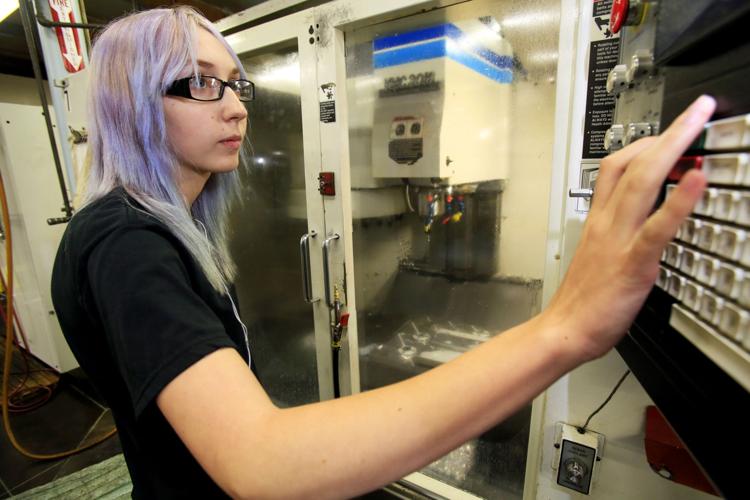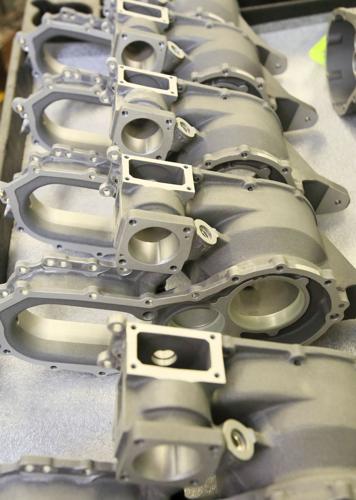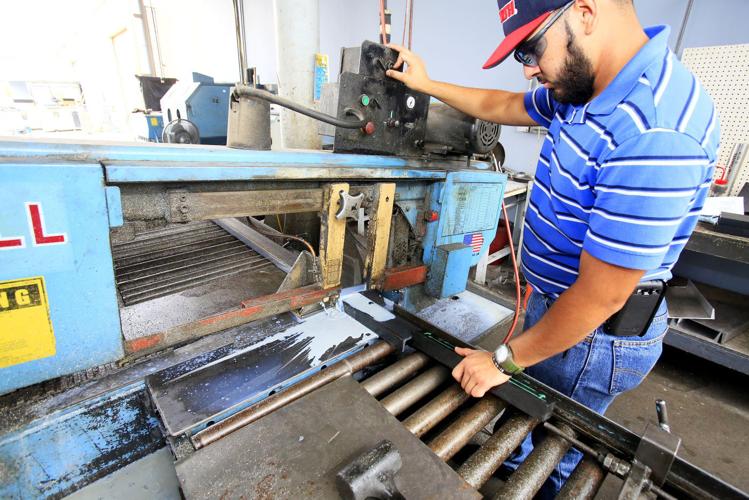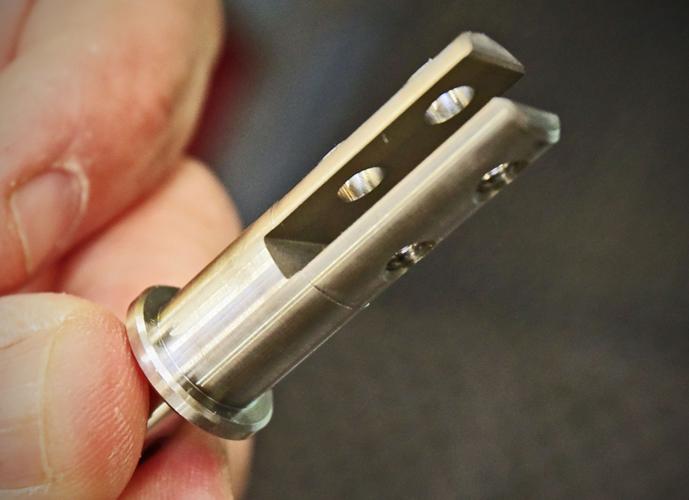Joint Technological Education Districts in Arizona will not survive the cuts the new state budget imposes, officials say, and they are counting on the business community to sway lawmakers in their favor.
“We have really good support from businesses. Business is what got JTED passed by the voters,” said Pima County JTED Superintendent Alan Storm.
JTED in Southern Arizona was approved in 2006 to offer tuition-free career and technical education programs to high school students from public, private, charter and home schools. Adults under 22 with a GED or who are studying to get one may also participate.
Throughout the state, JTEDs offer dozens of programs in fields including engineering, bioscience, health care, automotive and public safety.
Most classes are taught at local high schools, with only about 10 percent of students attending a central campus.
“We’re economic development, we’re workforce development, we’re putting kids to work at 18,” Storm said. “Everything we say in the state of Arizona, we talk about college and career ready — we are part of that.”
While state-funded education overall experienced cuts — including $28 million next year for the Uni.versity of Arizona and $7 million for Pima Community College — officials said the reduction to JTEDs is a death blow.
“Are there ways to overcome it? Are their ways to survive? I’ve looked at consolidating things but I just don’t think so. I don’t know how it’s possible,” Storm said.
Although his office did not respond when asked for comment, Gov. Doug Ducey addressed cuts to JTED during a recent Hispanic Chamber of Commerce luncheon.
“JTEDs and technical training is critical to the future of our state, and it will continue to be critical to the future of our state,” Ducey said.
“We had to do what had to be done in this budget session. That doesn’t mean that we can’t grow, that the state won’t expand, that there won’t be additional dollars available.”
Where the dollars may eventually come from is up for debate.
Funding problems
The number for JTED’s cut is a small one, 7.5 percent beginning in fiscal year 2017, but in practice that reduction means a 50 percent cut in funding for career and technical education at the school district level.
How does that work? For every student taking a career and technical education class, the state gives JTED money to run its programs. JTED then turns around and gives about 70 percent of that money back to the school districts where the classes are taught, keeping the rest for services and to operate its central campus.
In the new budget, districts and charters in which a student is enrolled in a JTED program will receive less money for that student for its maintenance and operations budget, according to an analysis by the non-partisan Arizona School Boards Association.
In those cases, the schools can use part of their JTED money, which is also being reduced, to cover the shortfall in their budgets.
That means that if a school receives about $700 per student from JTED, it sees its normal funding for that student reduced by about $350. It is then allowed to take that money from JTED to fill the hole, leaving half for career and technical education classes.
“You’re not going to have any money left to create good programs,” Storm said. “You want to buy a Mac? That’s not going to happen. You’re certainly not going to buy a 3D printer for an engineering program.”
Schools have no incentive to continue offering these classes if it’s going to cost them money, but the budget also states that a district cannot prohibit or discourage students from attending courses offered by a JTED.
While they may not want to, schools will begin to cut programs, officials said.
“That’s the difficult position school districts are put into. They have a budget, and the school districts are going to have to do what they have to do for their budgets,” said Dick Foreman, president of the Arizona Business and Education Coalition.
“There’s going to be a lot of JTEDs that obviously are going to lose students because of this decision,” he said.
Following the funding logic, fewer students taking advantage of JTED means less revenue for the program, less revenue for the districts, less revenue for JTED, and so on, Storm said.
“It’s really a death knell, it truly is.”
JTED success
When it comes to career and technical education, employers really value JTEDs and the services they deliver to Arizona students, said Garrick Taylor with the Arizona Chamber of Commerce and Industry.
“We want to foster a system where students emerge from high school ready either for college or career,” he said. “These career and technical education offerings are a central part of our state’s workforce development.”
Don Theriault, owner of Industrial Tool Die & Engineering, has had the opportunity to work with JTED students as interns for his business through a program sponsored by Southern Arizona Manufacturing Partners.
The group, made up of more than 30 manufacturing companies in the Tucson area, works with Pima County JTED and Pima Community College to train students and address the shortage of qualified workers.
“This year we had more employers than we had students, so we kind of fought over them a little bit,” he laughed.
The loss of JTED would hurt business in the long run and leave students who aren’t university-bound looking for opportunities, he said.
“There’s probably half of the population who aren’t a good fit for a four-year college, so what do we do with them? Do we train them for a job? Do we train them for life?”
Having said that, Theriault added that for many of the JTED students he deals with, a technical education is only a stepping stone.
Jesus Gil, who came out of the Desert View High School JTED and recently finished a training program at PCC, said he hasn’t stopped learning.
“Right now I have my machinist certificate, I’m going for my associate’s and hopefully I can go to the U of A and study engineering,” he said from the Industrial Tool Die shop floor.
Desarae Stephens, also a Desert View High School graduate, said JTED gave her options. She started off taking webpage design, switched to machining and took a drafting and design class.
“I really enjoy drafting and design, but this is where I should be for now,” she said. “Before, when I was drafting and didn’t have any background in machining, the parts that I would make didn’t work.”
She said she hopes to work for Raytheon one day.
Stevens is a good example of how JTED also offers students the chance to find their career path and make mistakes in high school that are costly in the real world, Theriault said.
“I’ve known some young adults that end up going to two or three of these private colleges because they think they want to be this, they think they want to be that. They end up with this huge debt they’ll never get out from under,” he said.
No easy solutions
As far as the budget goes, the cuts aren’t that complicated, said Kevin McCarthy, president of the Arizona Tax Research Association.
“The state of Arizona lost almost 40 percent of its revenue during the Great Recession, and the recovery has been very slow,” McCarthy wrote in an email. “Every recipient of state funding experienced cuts — including JTEDs.”
All budgets require policy makers to make tough decisions and the governor and Legislature were faced with a difficult situation, including a significant shortfall, said business group representatives.
“I wouldn’t dare to characterize the governor or any members of the Legislature as anti-education, I would characterize them as pro-balanced budget,” said Foreman, with the Arizona Business and Education Coalition.
With a goal of balancing the budget, targeting education for cuts was not easy, it was necessary, he said.
“If you have a serious budget deficit, which we have, and you’re the governor and you have to balance it, you’re going to touch education,” Foreman said.
“Just K-12 alone is 50 percent of the general fund. If you throw universities and community colleges, what’s left of them, you’re getting up in the 60 percent range.”
Business group representatives said that while funding options were still to be determined, they were optimistic JTEDs will survive.
“Several legislators have indicated they will seek to address JTED. There’s positive and ongoing discussions with the legislative leadership right now and many of the things that came out in the executive budget, some of them were clearly unintended,” he said.
While it is unlikely that Ducey will call a special session of the Legislature to address some of these education funding issues, Foreman said, they will probably be first out of the hopper in 2016.
“Obviously for the JTEDs and the charter schools, January is kind of a drop-dead month. If it’s not done with an emergency or done in a special session, there’s going to be cataclysmic results for those programs,” he said.
Foreman emphasized that he doubts the companies that sit on the advisory boards for JTEDs and benefit from them will allow them to go under.
Pima County JTED officials are also trying to be optimistic but realize that even if they make it past 2016, the programs will not be unscathed.
“Do I think legislators will say, ‘Never mind, we were just kidding’? No, I don’t. But if they said we can change the 7.5 percent cut to a 2 percent cut, we can probably survive that,” Storm said.
“My job is to fight this out. I’m the first and only superintendent of the Pima County JTED. I built it from the ground up. I can’t let it go. I’ll keep fighting.”







